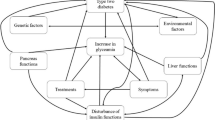Abstract
A compelling problem for language pedagogues is teaching foreign languages to students so they can retain and use the language skills in real communicative situations. One way to help students learn these skills is to understand and improve current pedagogical approaches to language learning. New technology such as Computer-Assisted Language Learning (CALL) provides pedagogues with rich, multimedia environments for presenting instruction. At the same time, deciding what to present and how to organize the instruction in CALL provides a new challenge. In response to this problem, we discuss preliminary results of a research effort for developing an instructional design environment (IDE) that is uniquely tailored to the needs of developing foreign language instruction. Hypertext features in the IDE software are used to capture and organize into one coherent framework the corpora of theoretical, instructional, and content material that affects foreign language instruction.
Similar content being viewed by others
References
Anderson, J. R. (1986). Knowledge compilation: the general learning mechanism. In R. S.Michalski, J. G.Carbonell and T. M.Mitchell (Eds.), Machine learning: an artificial intelligence approach. Los Altos, CA: Morgan Kaufman Publishers.
Bates, E., McNew, S., MacWhinney, B., Devescovi, A. and Smith, S. (1982). Functional constraints on sentence processing: a cross-linguistic study. Cognition, 11, 245–299.
Bever, T. and Slobin, D. (1982). Children use canonical sentence schemas: a crosslinguistic study of word order and inflections. Cognition, 12, 229–265.
Carter, R. (1987). Vocabulary and second/foreign language teaching. Language Teaching, 2, 3–16.
Dulay, H. and Burt, M. K. (1978). Some remarks on creativity in language acquisition. In W. C.Ritchie (Ed.), Second language acquisition research. New York, NY: Academic Press.
Flynn, S. (1987). Contrast and construction in a parameter-setting model of L2 acquisition. Language Learning, 37, 19–62.
Forster, K. I. (1976). Accessing the mental lexicon. In R. J.Wales and E.Walker (Eds.), New approaches to language mechanisms. Amsterdam, Netherlands: North Holland.
Jonassen, D. H. (1986). Hypertext principles for text and courseware design. Educational Psychologist, 21, 269–292.
Hammerly, H. (1985). An integrated theory of language teaching. Blaine, WA: Second Language Publications.
Halasz, F. G., Moran, T. P. and Trigg, R. H. (1987). Notecards in nutshell. In CHI Proceedings, New Orleans, LA.
Miller, G. A., Fellbaum, C., Kegl, J. and Miller, K. (1988). Wordnet: an electronic lexical reference system based on theories of lexical memory. CSL Report 11. Princeton, NJ: Princeton University.
Pirolli, P. L. and Greeno, J. G. (1988). The problem space of instructional design. In J.Psotka, L. D.Massey and S. A.Mutter (Eds.), Intelligent tutoring systems: lessons learned. Hillsdale, NJ: Lawrence Erlbaum Associates.
Rivers, W. M. (1985). Teaching foreign language skills. Chicago, IL: The Chicago University Press.
Russell, D. M. (1987). Planning instruction: using the IDE-Interpreter to design and create instruction. AI and Education Conference, LRDC, U. Pittsburgh, Pittsburgh, PA.
Russell, D. M., Moran, T. P. and Jordan, D. J. (1988). The instructional design environment. In J.Psotka, L. D.Massey and S. A.Mutter (Eds.), Intelligent tutoring systems: lessons learned. Hillsdale, NJ: Lawrence Erlbaum Associates.
Russell, D. M. (1988). The IDE Interpreter. In J.Psotka, L. D.Massey and S. A.Mutter (Eds.), Intelligent tutoring systems: lessons learned. Hillsdale, NJ: Lawrence Erlbaum Associates.
Swartz, M. L. and Russell, D. M. (in preparation). Instructional design for foreign language tutoring systems. In Proceedings of the International Workshop on Intelligent Tutoring Systems for second language learning, Trieste, Italy.
Smith, W. F. (1987). Modern media in foreign language education: theory and implementation. Lincolnwood, IL: National Textbook Co.
vanDijk, T. A. and Kintsch, W. (1983). Strategies of discourse comprehension. New York, NY: Academic Press.
Yekovich, F. R. and Walker, C. H. (1986). Retrieval of scripted concepts. Journal of Memory and Language, 25, 627–644.
Author information
Authors and Affiliations
Rights and permissions
About this article
Cite this article
Swartz, M.L., Russell, D.M. FL-IDE: hypertext for structuring a conceptual design for computer-assisted language learning. Instr Sci 18, 5–26 (1989). https://doi.org/10.1007/BF00121217
Issue Date:
DOI: https://doi.org/10.1007/BF00121217




